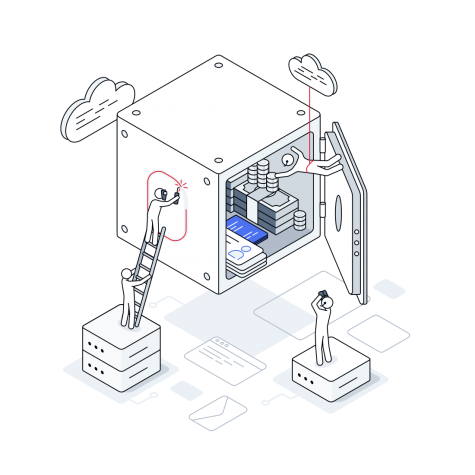About SWIFT CSP
What is the SWIFT CSP?
The SWIFT Customer Security Programme (CSP) is a framework designed to help financial institutions improve their cyber security posture. All SWIFT members must submit an annual self-attestation of compliance with the controls outlined in the framework.
SWIFT conducts random inspections on its members to ensure that they have appropriate cyber security controls in place and reports any non-compliant organisations to industry regulators, such as the UK’s Financial Conduct Authority.
Speak to an expert
Get in touchMDR for SWIFT CSP
Managed security services for SWIFT CSP compliance
The SWIFT CSP has three overarching objectives, split across seven key security principles and 27 controls. There are 16 mandatory and 11 advisory security controls. Mandatory controls are designed to establish a security baseline for the SWIFT community, while advisory controls are based on recommended best practice but could become mandatory in the future.
Redscan offers a range of managed security and assessment services to help organisations in the financial sector comply with the full spectrum of CSP controls and validate their annual self-attestations.
| Objectives | Principles | Controls | |
|---|---|---|---|
| 1 | Secure your environment | 1. Restrict internet access and protect critical systems | 2 mandatory |
| 2. Reduce attack surface and manage vulnerabilities | 3 mandatory, 6 advisory | ||
| 3. Physically secure the environment | 1 mandatory | ||
| 2 | Know and limit access | 4. Prevent compromise of credentials | 2 mandatory |
| 5. Manage identities and segregate privileges | 2 mandatory, 2 advisory | ||
| 3 | Detect and respond | 6. Detect anomalous activity to system/transaction records | 4 mandatory, 1 advisory |
| 7. Plan for incident response | 2 mandatory, 2 advisory |
Our Services
Our award-winning services
Redscan’s security services are designed to provide the vital assistance needed to make tangible improvements to your organisation’s cyber security posture.

Managed Detection and Response
Award-winning support to rapidly detect and respond to the latest threats 24/7
Read more
Assessment Services
Specialist engagements to uncover and address hidden cyber security risks
Read more
Managed Security Services
Expert help to manage and monitor your choice of security technologies
Read moreAbout us
Why choose Kroll?
- A leading global MDR company
- Red and blue team CREST CSOC expertise
- High-quality intelligence and actionable outcomes
- Quick and hassle-free service deployment
- An agnostic approach to technology selection
- Avg. 9/10 customer satisfaction, 95% retention rate
Get in touch
Complete the form for a prompt response from our team.

Resources








